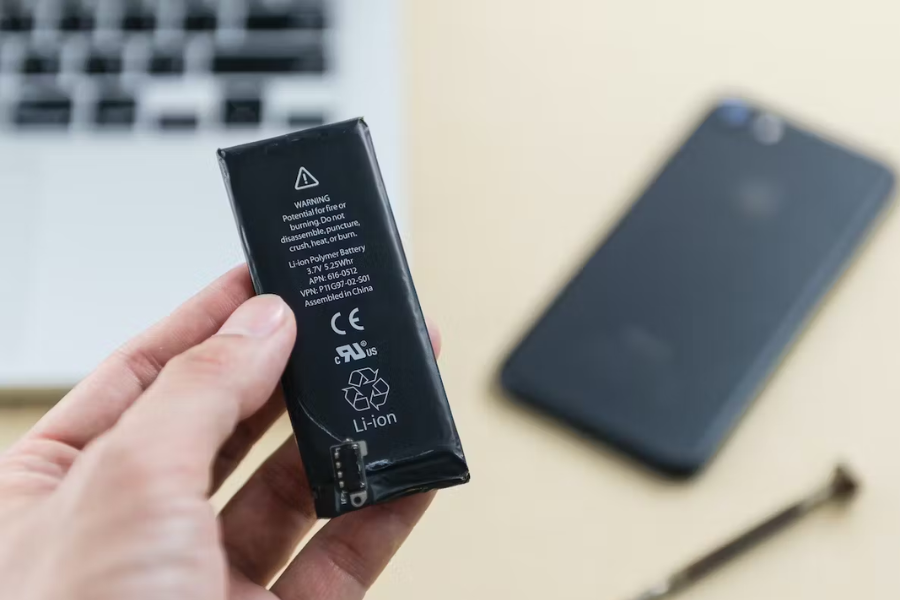Can we know when a battery is going to “die”?
The lithium-ion batteries on which countless devices depend today, from our phones to electric vehicles, have been around for more than 30 years and have become an essential component of current and future technologies.
Knowing their availability, longevity, performance and capabilities is now vital for users. But it is difficult to know these essential variables with certainty.
The question arises: should we trust the information that some devices such as the iPhone or any other mobile phone – or an electric vehicle – give us about the state of health of the battery? In other words, are we sure that the battery won’t let us down just when we need it most?
“Life” and “death” in one circuit
Lithium-ion batteries are made up of cells, each containing a positive and a negative electrode. These are immersed in an electrolyte that acts as a conductor to transport the ions. In this way, the electrons travel through the external circuit that powers the electrical devices and makes them work.
In the process, the batteries are discharged and have to be recharged again. This is called a cycle, and, like any other battery, the more cycles they experience, the sooner they “die”.
Studies measure how many cycles the battery lasts under certain electrical conditions. Unfortunately, changing factors such as operating temperature, charge/discharge rate and usage time lead to different lifetimes, making it really difficult to establish the health of batteries over time.
Will it be possible to estimate when a battery will cease to be operational, and what functionality it may have once it has reached the end of its life?
Digital twins
Industry 4.0 has been working on virtual simulation technologies since mid-2010, on so-called digital twins. These are sets of virtual information that fully describe a physical product.
In this area specifically, a lot of progress has been made in the development of simulation programmes for both the design of industrial plants and the virtual recreation of their processes.
These “twins” aim to analyse, optimise and improve the productivity of a plant in real time, reducing development times and detecting faults early.
With the right software, everything from industrial plants to devices such as batteries can be simulated. And thus have an exact digital reality in which to contrast the information recorded in the digital twin with that implemented in the battery management system.
This makes it easier for them to operate with maximum efficiency and ensure greater durability, as well as exploring their performance at specific moments, avoiding failures and even addressing possible optimisations.
Overly simple models
The problem is that batteries are very difficult systems to model faithfully.
Generally, indicators are used that are sometimes not directly measurable, such as the State of Charge (SOC), which represents the amount of charge the battery has compared to the maximum possible, and the State of Health (SOH), a parameter that assesses the performance of a battery compared to its ideal conditions.
Thus, the models are still too simple and their characteristics depend on the different types of batteries, their design and their type of manufacture.
Therefore, the accuracy of the indicators described above decreases, and not precisely in a linear way, and this must be taken into account in the operation of energy storage systems.
The BEST project
From Institute IMDEA Energía and the University of Alcalá de Henares, we are entering the field of digital twins for batteries with the Battery Energy Storage Digital Twin (BEST) project, funded by the Spanish Ministry of Science and Innovation.
In this initiative we propose the use of digital battery twins through the integration of mathematical models and health status estimators, as well as the analysis of operating data using artificial intelligence techniques.
This will provide greater knowledge and control over the real conditions of the battery systems throughout their operating life, thus reducing the differences that may exist between the definition of the model and the real system.
These differences generally arise either when the passage of time affects the characteristics of the batteries, or when an accurate model cannot be produced, or when working with a detailed model is not possible or is ineffective.
As a strategy, we have chosen a twin that brings together different techniques and allows us to achieve this purpose by creating a dynamic model with two approaches:
- The first is the reproduction of the state of health of the batteries based on the estimation of the state of the most relevant indicators of the cells (the aforementioned SOC and SOH).
- The second is the development of battery degradation models, obtained through a proper characterisation of cells of different chemistries and electrochemistry (lithium-ion power and capacity batteries, including other types of batteries such as redox flow batteries).
This, integrated with an analysis of operating data using artificial intelligence techniques, will provide much more complete and useful information on the actual condition of battery systems.
With this framework, it would be possible, for example, to calculate when they will reach the end of their life cycle and determine their state of health, either to find an efficient recycling method or to give them a second life in a less demanding application.
If it works, we would have come up with nothing less than a way to avoid suddenly running out of battery on our mobile phone and, secondarily, ending up with the excuse of blaming the battery for being late for a meeting or not answering a message on time.



